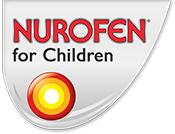Minimizing the Chances of Cold and Flu in the Workplace

Colds and flu are highly contagious viral infections and can spread rapidly in crowded environments, such as schools and playgroups.[1] What’s more, flu viruses can survive in the home or other places for up to 24 hours and cold viruses thrive for up to a week on indoor surfaces.[2]
That makes your home, with its shared amenities, a potential hotbed of infection. But if you or your child has a cold or flu, there are measures you can take to reduce your chances of spreading it to your family.
Why a closed environment can help the spread of colds and flu
If your child is infected with a cold or flu virus, they can be contagious for up to three days before symptoms start to appear.[3] Once the symptoms present themselves, cold and flu viruses can be spread in when they start sneezing and coughing. Soon, the entire classroom is infected one by one. These same germs are then brought home.
Infected children with poor personal hygiene, such as those who do not cover their face when sneezing or wash their hands after coughing into them, are the first to spread the flu virus to other children. Teachers must remain vigilant to spot children who are sneezing or coughing too much, or who look flushed and feverish.
What can you do to avoid spreading colds and flu from school to home?
If your child has developed a cold or flu, the best thing to do is let them recuperate at home. The same applies to you if you are infected – do stay away from your child and throw away all used tissues at once. Let your child rest and keep plenty of tissues and water close at hand.
Other measures include:
- Hand hygiene: Encourage your child to wash their hands regularly and use a hand sanitizer, especially before eating.
- Desk hygiene: Encourage your child to wipe down their desk and chair with an antibacterial wipe if there has been a bout of flu in the classroom. Use an antibacterial wipe on their school things as well.
- Cough and sneeze ‘etiquette’: Teach your child to always cover their nose and mouth when sneezing or coughing, and to never leave their used tissues lying around.
- Keep your distance: Tell your child it is okay to stay away (but being kind about it) from children suffering from a cold.
- The flu vaccine: Prevention is often better than cure, so the flu vaccine can also reduce the chance of your child catching flu and therefore spreading it around the class. Find out if your child can take the vaccine from the pediatrician.
How you can manage cold and flu symptoms
Although colds and flu are caused by different viruses, they share some similar symptoms. These can include a runny and blocked nose, sneezing, a cough and a sore throat. Fever, tiredness and muscle aches are also possible, especially with flu.
Treating the symptoms of a cold or flu is known as symptomatic relief. This could include remedies such as:
- A decongestant to help unblock the nose
- Drinking plenty of fluids to soothe the throat and keep the mucous membranes in the nose moist
You may also wish to consider a cold and flu treatment like Nurofen.
Nurofen for Children
Nurofen for Children contains ibuprofen as its main active ingredient. It provides up to 8 hours of relief from the pains associated with cold, flu and congestion, without making the child feel drowsy.
Nurofen for Children also contains pseudoephedrine. It is useful to relieve cold and flu-related congestion.
[2] http://www.nhs.uk/chq/pages/how-long-do-bacteria-and-viruses-live-outside-the-body.aspx
[3] http://www.webmd.boots.com/cold-and-flu/cold-guide/common-cold-too-sick-to-work
